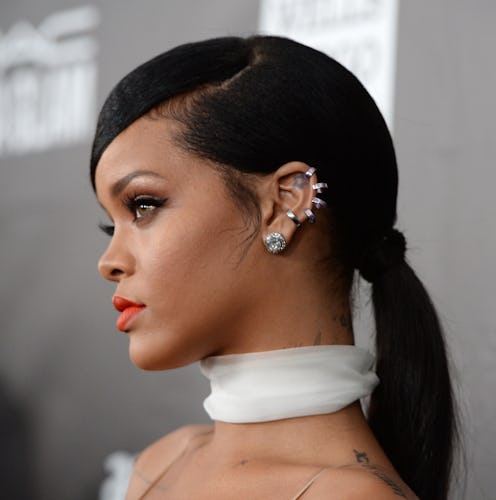Fashion
What Should You Do If Your Ear Piercing Closes Up?
If you’ve ever had a piercing, you know that sometimes they have to be removed, whether it was because they got in the way of the sports you played or because you just grew tired of them. But then you decide after weeks (maybe even months) that you want to put your earrings back in, only to find that your ear piercing has closed up. Now what? You’re sitting there with some beautiful jewelry and it seems that you no longer have a piercing!
Crap.
Having had my fair share of piercings (especially on my ears), I have also experienced this shock. As a teenager, I removed a few of my ear piercings for a significant amount of time. When I finally came around to putting them back in, I was surprised to find two of my holes had closed. I tried different ways of getting the earrings through, discovering that one hole had only barely sealed from behind, while the other had actually closed. Let me take a moment to say that I was reckless and impatient, so when it came to the only hole left that I couldn’t manage to open easily, I simply shoved the stud through and that was that.
Now, before I continue with this story, I would like to point out that there are two kinds of closed piercings. There is the kind that is like the first hole I opened, where it seems like there’s only a thin bit of skin that has covered part of the opening or piercing. You are actually able to put the earring through (from either side), but not all the way. Most of the time, if you’ve removed your piercing, this is what has happened.
Should you force it back open?
Like all things, it depends. Everyone is different, so I won’t say yes or no. Instead, you should try to gently play around with your piercing to see if it is simply a thin layer of skin that has grown over in your body’s attempts to heal itself. If this is the case, a small bit of pressure will pop your ring through with no pain or messiness.
These attempts can be easier after you've:
- cleaned and disinfected the area and all your material
- taken a shower, as your skin is much softer and malleable
- massaged the piercing with a bit of oil (like emu oil or jojoba oil)
- pulled the skin around your piercing a little to make the hole bigger, which can help to insert an earring
- tried different angles of inserting, like from the back of the hole or by gently shifting the ring while you put it through
However, keep in mind that you are not a professional! I will say that again: you are not a professional. Piercings can be tricky; they are essentially open wounds. If you’re trying to do this on your own, and you just can’t manage to do it without feeling pain or some sort of panic that you’re going to screw it up, STOP.
What Could Happen?
Back to my story: in my carelessness, when I inserted the second stud into my ear, I had managed to re-pierce my ear but not through the original hole. Instead, I had basically stabbed a new exit point. My piercing was now crooked and essentially raw. If that wasn’t annoying enough, my jewelry wasn’t the greatest, so it had irritated the skin and my ear was throbbing! I immediately removed the piercing, disinfected my ear, and have yet to put an earring through that hole again. Unlike my first hole, this piercing had closed up more than the thin layer of skin. I had basically side-swept the developed layer of scar tissue and had given myself a new, fresh piercing.
If you decide to wing it and re-open your hole, you’re taking some chances. You are risking:
- improper placement.
- misalignment.
- infection (from unclean jewelry or inappropriate material)
- ugly scarring
- keloids or excessive scar tissue
- your chances of being able to re-piece that area again
You are at risk for these issues whenever you get a piercing, but because you are doing it to yourself (and are probably not a professional) the possibility increases!
My re-opening experience is likely rare, but it is a good example of both outcomes. One worked out, while the other didn’t. However, everyone’s body is different. The safest bet is to see a professional, but if you just can’t be bothered, examine your ear and keep what I’ve said in mind.
Images: Getty Images; Giphy (5)
